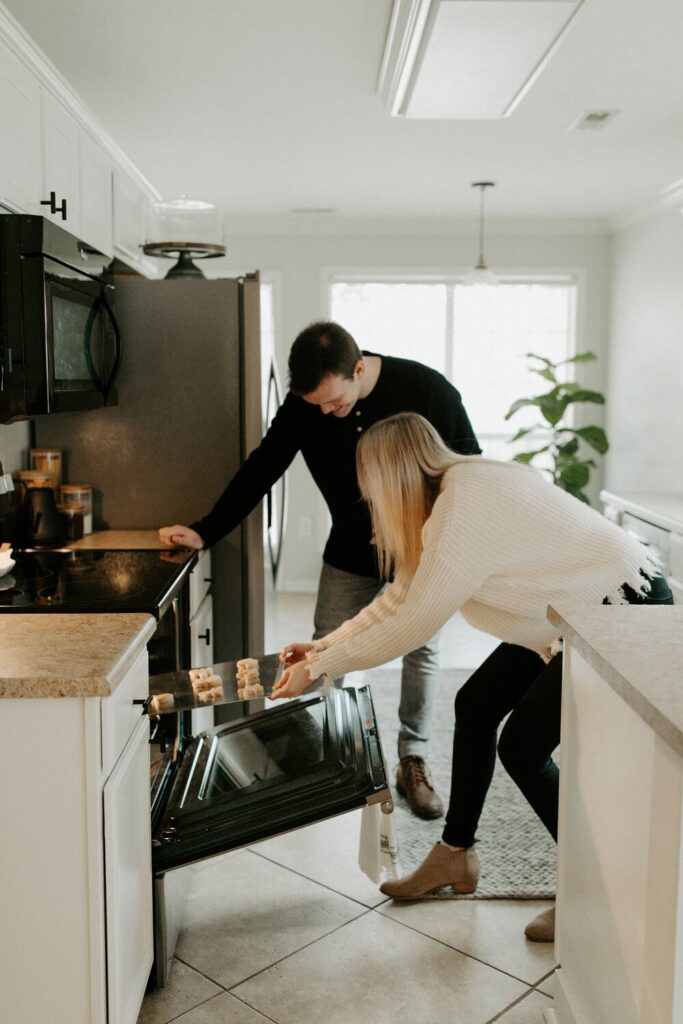
Now that the clocks have gone back, the dark nights have arrived and the temperatures dropped, there’s no denying that the thought of a hot, home cooked meal is the thing that gets us through the day.
Planning a modern kitchen is complicated; bespoke cabinetry and worktops, splashback materials and the appliances needed to keep things running smoothly are just some of the main priorities you need to have in mind. You will most likely have thought about lighting, wall colour and flooring – aesthetic, easily imaginable things – but the one consideration that can often make or break the usability of a kitchen, particularly during the winter months, is heating – often overlooked because, well, kitchens get hot.
How you choose to heat your kitchen then, whether it’s through the use of radiators, a cast-iron range that runs the central heating, or underfloor heating, will have a huge impact not just on how you use your kitchen when it’s complete but how you design the room from its inception. So, with all that in mind, here is our IDEAL guide to heating your kitchen.
IT ALL BOILS DOWN TO THE BOILER
A good, reliable boiler is the key to any working heating system – if you are running with an old boiler that isn’t very energy efficient, it might be worth upgrading whilst updating your kitchen. Doing so, to an A-rated condensing boiler, could reward you with a 90% increase in efficiency. Additionally, replacing a boiler could free up room for more cupboards or worktops and you’ll benefit from instant hot water if you opt for a condensing combi-boiler.

CAST-IRON RANGES
A traditional choice when designing kitchens such as farmhouse designs, an ‘always-on’ Aga suits certain premises perfectly. It provides a radiant heat to warm your kitchen on a winter’s morning, but can’t run a central heating system, meaning the choice is in part aesthetic. If you want your heat-store range to do that, then opt for models from Stanley or Rayburn, which can run up to 20 radiators.
UNDERFLOOR HEATING
A small, subtle nod to luxury is underfloor heating. It can be easily installed when designing your kitchen from the floor upwards and gives comfortable, radiant heat; it can deliver great savings too.
Underfloor heating is pretty versatile depending on what type of heating you opt for. Generally, it can be used under most types of flooring, including stone, tile, wood and vinyl. It would be irresponsible not to check your floor is a suitable match before you go ahead and invest, but a large kitchen with porcelain or ceramic tiles are almost always a perfect fit for underfloor heating.
Electric flooring is one of two types available; it’s easier to fit for starters, as it’s a network of wire elements on a mesh placed below the flooring or wet systems, using water pipes below the floor. An electric system can be retro-fitted fairly easily if you’re laying a new floor; just check with your builder first, always. Wet systems represent the alternative, though they require more work and are better suited to renovations such as new extensions or completely new builds.
The beauty of underfloor heating is in the fact that you don’t have to give over valuable wall space to radiators, saving room for cabinets and bespoke storage solutions. It’s vital to have your kitchen design finalised before the pipes or matting are laid for the flooring, as it would be an absolute waste to heat built-in cupboards or a space under appliances. A floor plan from your expert designer will help any heating engineer advise not only the best pattern to lay the floor in but also where to place the controls on the walls. Using a timed thermostat means that you can set the heating to warm the room just enough to make stepping into your kitchen on a frosty winter morning a little easier.

RADIATORS
For many homes, for many years, radiators run by a central heating system have been the heating of choice and convenience. Usually already in place, updating them from dated 1970s flat panel models to one of the many stunning styles on offer, from specialists such as Bisque or Aestus, can completely change the look of a room. For contemporary schemes, look at ladder-style vertical radiators in sleek white and steel finishes. For classic kitchens, pick something a little more ‘period’ in its look such as Bisque’s Classic range, which echoes Edwardian shapes.
Aluminium models are a great option if you are eco-minded as they heat up and cool down much faster than traditional radiators, which saves both time and energy. One thing important to ensure is that you have just the right amount to heat the room. There are plenty of online calculators to help you do this; just pop in the room’s dimensions and the number of windows, and the calculator will give you the BTUs or wattage required.
GO MOBILE
New apps mean that heating systems can now be controlled remotely from your phone. Consider investing in an app-controlled heating system such as Hive or Nest, so you can switch on your heating using your phone, wherever and whenever you feel the need.




